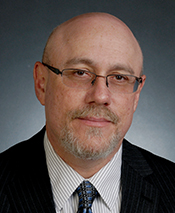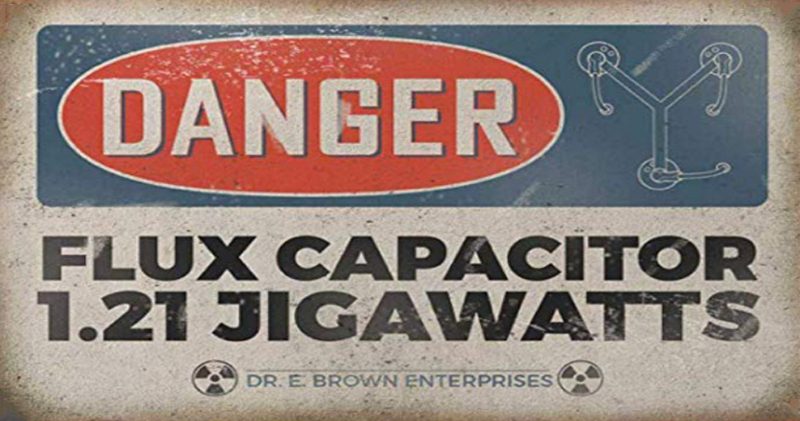Battle Royale: FDX vs ESD
Which Tastes Great And Is Less Filling?
By Jeff Finkelstein
If you have been in the cable industry for a while, you are used to reading and hearing about new technologies on the horizon. It seems that almost daily we are inundated with the promises of new technology that will solve all our problems. Just this morning in my email I have 30 messages from vendors, trade magazines, and standards groups, all wanting attention to their latest and greatest ideas and desiring time to present them. Not an unfair ask, but in almost all cases they are from a company or individual that I never talked to or met.
That is something that continues to surprise me in how much things have changed from my intro to cable 32 years ago. Back then we met with our sales teams regularly and talked about products, customer demands, what our strategy for improving the customer experience was, and more. We had a good relationship with our vendors and worked together to improve our product offerings as a service provider.
In the past few years, there has been a shift in how things get done. With the advent of the waterfall model, agile development, project management strategies, and the rapid release cycles, we are in a constant stage of technological change that makes it hard to keep track of where products are leading and whether they will actually make it to market. We are in a constant state of flux that requires attention to help us understand the applicability of a given technology to the problems at hand.
In other words, the rate of implied technology change in many cases outpaces our ability to deploy it or in some cases, even understand it…
As a futurist and writer I feel this discomfort daily. We are inundated with new technologies and concepts every day, all-promising and in many cases delivering improvements. Some are quantum leaps over what we have been using for years, while others are incremental improvements over existing products we use today. I first wrote about this in my Winter 2017 Broadband Library article called “SOS… Getting help with the Shiny Object Syndrome” which covered the challenges of the rapid release cycle of new technologies. Two years later we are still in this maze of twisty objects, where many are alike.
The media does their job by reporting on these new products to keep us informed. What we often miss is not the, “could we do it,” but “should we do it.”
ESD vs FDX
A good recent example is DOCSIS 4.0 and the availability in a few years of both extended spectrum DOCSIS (ESD) and full duplex (FDX) DOCSIS. These mutually exclusive technologies at the silicon level where products will support either capability, just not simultaneously, will be available for us to consider in the near future. Near future as in 2021/2022.
The questions we have to answer fit into the framework I discussed in the Fall 2019 Broadband Library issue. Back to the three questions we have to answer while considering them:
- Are we willing to change?
- Is it better than the status quo?
- Can we execute it?
As you read on, keep those in mind…
Both ESD and FDX require a significant investment into the cable plant. ESD requires changes to actives, passives, and DOCSIS equipment, both in the outside plant and in the customer premise. First to consider is that we need to change out passives to support up to 1.8 GHz, though as part of the product specifications we are requiring 3 GHz housings to prepare us for the next step in the ESD evolution of 3 GHz top end and an upstream that may go up to 1 GHz. This is a business-as-usual (BAU) strategy in that we have made these changes before and know how to do it as part of our daily work. We of course want to minimize the impact to customers, but recognize that it is something we need to do as an insurance policy. We would prefer not to cut in new taps and splitters, but we can take solace in the fact that if we do it over time it buys us many, many years before we will have to touch things again.
At Cox, we made the investment during our EON (extensible optical network) project that ran from 2006-2010, when we made the move to a 1 GHz plant. Ten years later we can now look back and say that was a good investment as it enabled us from a plant architectural perspective to offer 1 Gbps downstream today. At the time we discussed our options and decided that it was the right thing to do.
FDX currently requires node + 0 actives (N+0), which means we need a fiber deeper architecture to feed sufficient capacity to the new RPDs or RMDs we need to install to support an FDX operation. There is some great work going on around FDX amplifiers, but it will take time to crack that nut. Still, I am hopeful that the smart folks who are working on that will figure it out in the next few years and that products will be highly versatile and support both FDX and ESD.
If we are willing to change the outside plant (OSP) to 1.8 GHz, we expect a similar run. But by using 3 GHz housings we are future-proofing our passives to allow an easier move up to 3 GHz. Rough estimates from capacity and speed planning groups say that while 1.8 GHz gives us a 10+ year lifespan, 3 GHz can possibly take us another 20+ years in growth. That is a good return on the investment of changing out passives to prepare us for our future options. A plus is that passives don’t care if we are running ESD or FDX. Testing to date has shown that most cables deployed will support 1.8 GHz to 3 GHz (except for some pesky 412 cable), so for many there is not much cable replacement needed. Still, it is something to be considered when deciding.
Actives are a bit trickier as they possibly require the fiber deeper architecture, cable resizing, and changes to the power distribution (and possibly more power inserted into the cable plant) to support the new devices needed for reducing amp cascades. An additional complication is that as we re-architect our cable networks we need to simultaneously consider redesigning them to support future needs like gigabit symmetrical services. Whether we go to a 1×1, 1×2, 1×4, 2×2, or 4×4 design, we may need to move hardline trunk and express cables. Just something else to consider in our plans.
As I said earlier, FDX requires a passive plant, but that in itself simplifies and complicates things. A passive cable plant is much easier to maintain at the physical layer, but the number of intelligent active components added is noteworthy. For example, in a 500 households passed (HHP) plant we may have four legs with a total of 20 active components consisting of RPDs, amplifiers, line extenders, feeder amps, etc. When we take that to a passive plant we are removing the actives but also adding 10-14 new RPDs, which means our net power requirement is likely net zero or possibly a slight change in the total plant power required. This is still under consideration by operators and vendors, but it seems to be going this way at the moment.
Both FDX and ESD are significant improvements over the legacy plant that extend the useful life of the cable plant a long way. While at the moment they are mutually exclusive, there is a potential in future versions of DOCSIS that they may merge into a single product specification.
The road less traveled
So, which one to choose? There is no absolute correct or incorrect answer. It all depends on the strategic vision for plant architecture, product offerings, and customer demand. While we control to a degree product speed offerings (depending on competitive positioning), we do not control the customer demand on the network. Customer demand is dictated by the application needs, and we know that as video goes over-the-top with HD and 4k content, the capacity demands increase in many ways similarly to offering gigabit speeds.
If your current cable plant is 1 GHz, you may choose ESD over FDX as you already have additional spectrum available. But if you are at 750 MHz or 860 MHz you may not want to upgrade all the components needed for ESD and will take the FDX and passive coax path to avoid changing everything out at once. It is a matter of where and when we choose to spend our investment capital.
One thing is for certain, we need to act now to prepare our networks for future demands. We must be bold in our investments to reap the long-term benefits of having latent capacity in our cable network. We also need to stay true to our strategic vision for our companies and keep the future network visions in sight as we build for the demands of products that have not been invented yet.
That, in a nutshell, is the 10G vision. It is not that we can do it all today, but as we each undertake our planning and then execute to that plan, we have a strategic vision of where we are headed and how to get there.
Happy planning!

 Jeff Finkelstein
Jeff Finkelstein
Executive Director of Advanced Technology
Cox Communications
Jeff.Finkelstein@cox.com
Jeff Finkelstein is the Executive Director of Advanced Technology at Cox Communications in Atlanta, Georgia. He has been a key contributor to the engineering organization at Cox since 2002, and led the team responsible for the deployment of DOCSIS® technologies, from DOCSIS 1.0 to DOCSIS 3.0. He was the initial innovator of advanced technologies including Proactive Network Maintenance, Active Queue Management and DOCSIS 3.1. His current responsibilities include defining the future cable network vision and teaching innovation at Cox. Jeff has over 43 patents issued or pending. His hobbies include Irish Traditional Music and stand-up comedy.
Shutterstock




